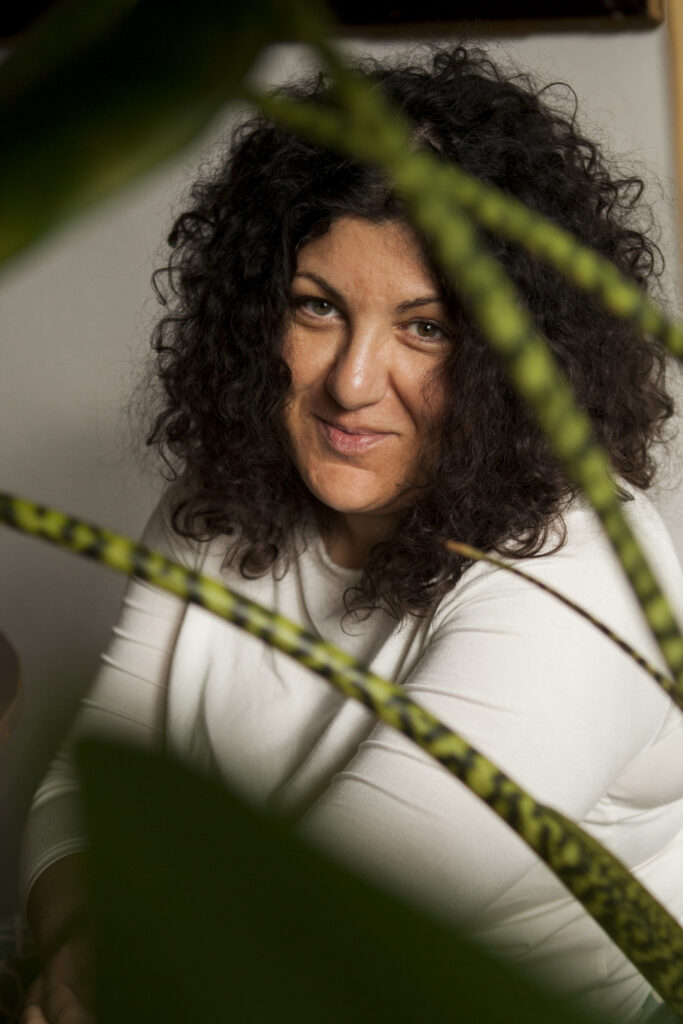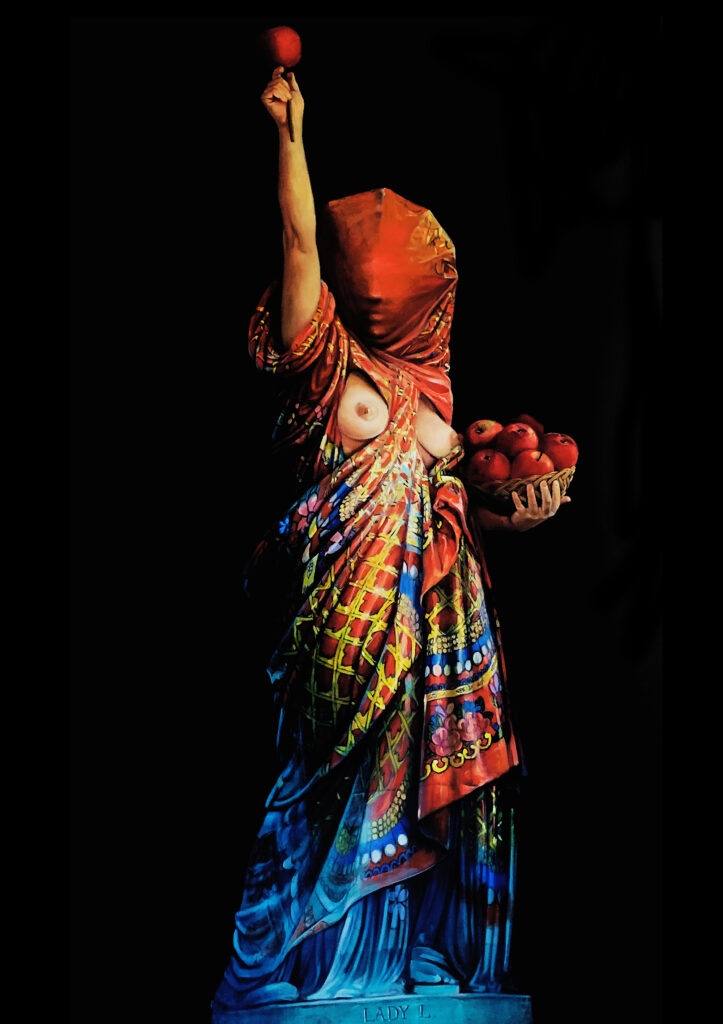Emília Rigová
Emília Rigová (1980, Trnava, SK) is a trained sculptor. She studied stone carving at Bratislava’s School of Applied Arts and later the Sculpture Department of the Academy of Arts in Banská Bystrica. Even though she does not create sculptures in the traditional sense, work with space is a typical feature of her art. She moves primarily in the media of installation, performance, video, and graphics, while her works are formally characterized by a search for meaning and possibilities of employing principles of sculpture in the contemporary digital age.

Thematically, she focuses on the question of (her own) identity, tension between social constructs and subjectively experienced reality. She investigates the problems of gender, racial, and ethnic minorities in an engaged manner, especially the relations between Roma identity and the majority society. She demonstrates the issue of social and cultural stereotypes and body politics by means of her alter ego, Bári Raklóri, which she created in 2012. She uses it to de-construct and newly construct representation of a Roma woman in the Western canon of art and contemporary culture. Her oeuvre also has an activist dimension, markedly present mainly in the projects realized in cooperation with other artistic subjects – as interventions in the public space. Apart from her own artistic endeavors, she teaches at the Department of Visual Culture of the Pedagogical Faculty of the Matej Bel University in BanskáBystrica or Barvalipe Academy in Berlin.
In 2018, Rigová was awarded the prestigious Slovak award for contemporary art, the Oskar Cepan Award.
LADY L. TEXT
In 2018, Rigová was awarded the prestigious Slovak award for contemporary art, the Oskar Cepan Award. This award comes with a residency in New York. This stay had an influence on Rigová’s most recent work, presented in her solo show ‘Čohaňi z KoniAjlend’ (The Witch from Coney Island) at Kunsthalle Bratislava, which opened just before the corona crisis on March 5th, 2020. In this exhibition, Rigová deals with the reconstruction of the cultural history of the Roma diaspora, which the artist personally experienced in New York.

One outcome of the residency in New York and its impact on Rigová’s artistic practice was the use of the figure of the red apple in her practice. Red apples (loliphabaj) are a symbol that the artist uses to get at the etymology of the word “lollipop.” Here, the artist is reclaiming the red apple as a Roma symbol, since the red sugar-coated caramel apples were historically sold by the Roma at markets. Similarly, the motif of the apple in her work also relates to the Statue of Liberty, ‘Lady L’. In this work, Rigová wrapped the Statue of Liberty in the traditional red Roma scarf, leaving the breasts of the statue exposed. Through feminist and Roma symbols, the artist seeks a deeper understanding of her own identity. ( DenisaTomkova, Politics of The Body, BerlinArtLink)
The visual motif of loliphabaj (loli = red, phabaj = apple) points to the etymology of the word lollipop, that much-loved “lolly” of American pop culture, whose prefiguration and origin the artist finds in certain silenced contexts of the history of Roma culture. In Lady L. the statue of freedom is costumed in a typically decorative Roma headscarf with a feminist accent (emphasis on the femininity and politics of the artist’s body), while her customary attributes are exchanged for apples pierced on a rod (in the Roma culture those were designed for roasting). The image is a symbolic personification and retrieval (correction) of the Roma starting-point of American popular culture. Together with the Loliphabay video performance, where the artist in her characteristic medium actively “crunches” confectionery, one may understand it also as a search for identity, a journey of finding oneself, of identifying oneself in an alien world. ( NinaVrbanová, part of curatorial text for exhibition Čohaňi z KoniAjlend)
